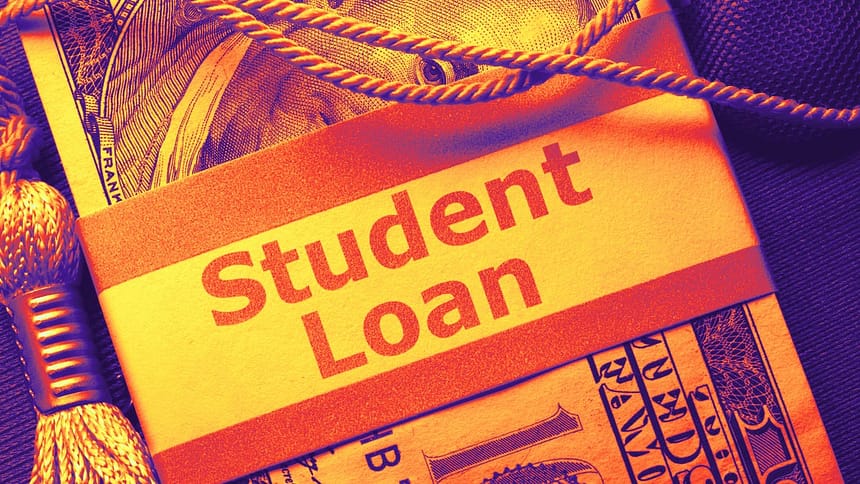
If your federal student loans are in default, the Department of Education could begin garnishing your wages soon.
If you’re behind on your student loan payments, the Department of Education is about to use your paycheck to get your attention.
The Department of Education announced it had resumed involuntary collections on student loans on May 5. That’s the same day it began sending defaulted student loan borrowers a 30-day notice that their income tax refund and federal benefits will be withheld, known as the Treasury Offset Program.
“Later this summer, all 5.3 million defaulted borrowers will receive a notice from Treasury that their earnings will be subject to administrative wage garnishment,” the statement said.
Federal student loans enter default after they are 270 days past due. Loan servicers can first report loans that are 90 days past due as delinquent, which can be reported to the credit bureaus and damage your credit score. After the loan enters default, the consequences become more severe:
- The entire loan balance becomes due immediately, plus additional collection fees.
- The government can withhold money from your income tax refund (federal and state) and other federal payments, like Social Security benefits.
- Your loan servicer can order your employer to garnish your wages up to 15%.
Experts noted that this does not affect borrowers who are in repayment, including those enrolled in the SAVE plan, but they advise taking action now. “Borrowers in default should act quickly to prevent collection efforts by contacting the department’s Default Resolution Group,” student loan expert Elaine Rubin said in an email.
You can check the status of your federal student loans at StudentAid.gov or by reaching out to your servicer. If your loans are in bad standing, here are three options you have right now.
Read more: Does Student Loan News Have You Scared? I Talked to an Expert to Answer Your Top Questions
Direct loan consolidation: Quick relief if you have multiple loans
Consolidating your defaulted loan into a direct loan consolidation is the quickest way (besides paying it off) to get out of default. However, there are a few things to consider. First, are you eligible for consolidation?
“If you defaulted on a direct consolidated loan, you may need at least one other eligible loan to consolidate,” Rubin said. “If you do not have any additional loans, consolidation may not be an option for you.”
Second, understand that consolidating your loan will stop collection activity, but there are still consequences.
“Although consolidation is quicker, it does not remove the default from the borrower’s credit history and interest and collection costs may be added to the outstanding loan balance,” student loan expert Mark Kantrowitz told CNET in an email.
If you choose to consolidate, you’ll have the option of entering an income-driven repayment plan or making three consecutive, on-time payments to qualify for consolidation. Rubin said if you enroll in an IDR plan, the process can take up to 90 days.
Loan rehabilitation: Takes longer but can help rebuild credit
Loan rehabilitation takes longer than consolidation, since you’ll need to make nine consecutive on-time payments based on your income. After that, your loan is considered out of default and the default (but not the delinquencies) is removed from your credit report.
If you decide to do to a loan rehabilitation before wage garnishment begins, Kantrowitz said you will not have your wages withheld while making payments. “But, if the borrower’s loans are already subject to garnishment, the nine out of 10 payments are in addition to the involuntary garnishment payments,” he added.
Rubin noted that you should still carefully consider your goals before taking action. “If the primary objective is to rebuild credit and eliminate the default record, rehabilitation could be the best option,” she said. “On the other hand, if the borrower needs to qualify for additional financial aid in the near future, consolidation might be the more practical choice.”
Pay off the entire balance: Best, but hardest option
If you’re already struggling, this is probably not an option. However, the Department of Education said you can avoid collections and negative credit reporting by paying off your debt within 65 days of notification that your loans are in default. You can see your loan balance through your loan servicer’s account or by logging into StudentAid.gov using your federal student aid login and password.





